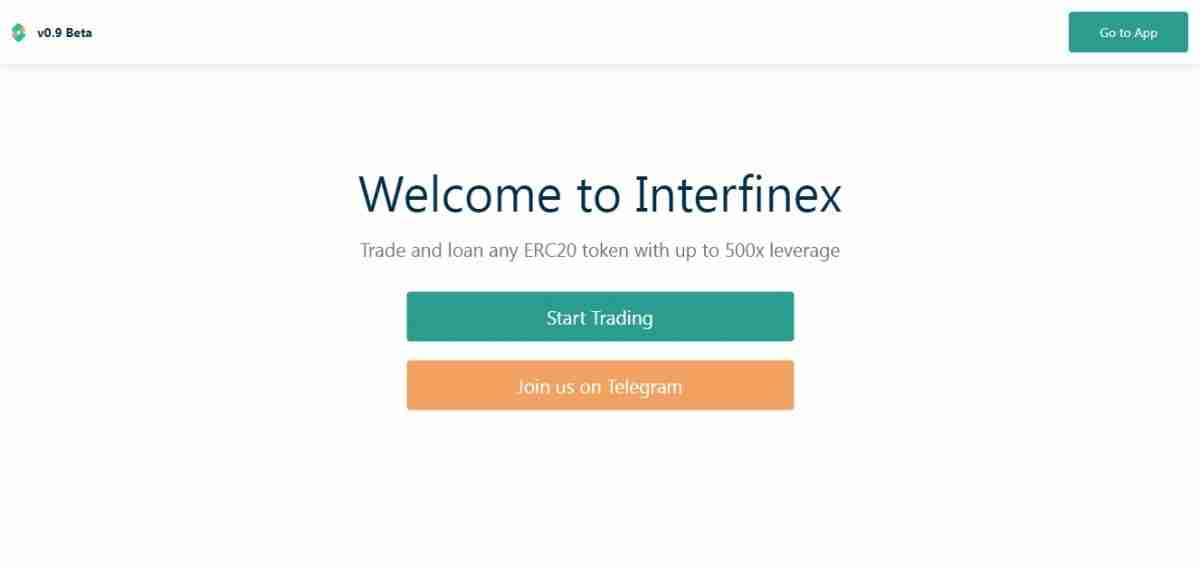What Is Interfinex (IFEX)?
Interfinex is a protocol that allows you to trade various financial instruments on the Ethereum blockchain. The baseline vote ensures that there will always be a sufficient amount of votes for each proposal and helps prevent the “voting incentives” problem. The baseline will decrease only if the winning vote is less then 1.1x the baseline vote.
Interfinex Storage Key Points
| Coin Basic | Information |
|---|---|
| Coin Name | Interfinex |
| Short Name | IFEX |
| Circulating Supply | N/A |
| Total Supply | 2,100,000,000 |
| Source Code | Click Here To View Source Code |
| Explorers | Click Here To View Explorers |
| Twitter Page | Click Here To Visit Twitter Group |
| Whitepaper | Click Here To View |
| Support | 24/7 |
| Official Project Website | Click Here To Visit Project Website |
Claiming Dividends
Each time a user claims dividends their last claim is updated. The last claim is the value of the total dividends since their last claim. Interfinex The amount they can claim is the difference between the total dividends and the last claim multiplied by the amount of tokens that they hold. Each time a user makes a transfer both the recipient and the sender claim their dividends. This is to prevent duplicate claims.
Distributing the Excess Balance
The dividend ERC20 contract should never be able to claim dividends; Instead, the contract’s excess dividend token balance should be distributed among everyone else. In order to account for this Interfinex the total dividends calculation is modified as so.
Margin Trading
Interfinex are proud to introduce your solution to general purpose margin trading; In addition, your solution also allows you to loan any ERC20 token.
Borrowing
Users can borrow funds from the funding pool. Collateral is the amount of tokens a user deposits in addition to the amount he is borrowing from the pool. In addition to collateral, users must also post maintenance margin – Interfinex can be thought of as insurance on the borrowed amount. The amount a user borrows relative to the amount of collateral he posts is called his leverage. Each market has limits on the amount a user can borrow and the amount of leverage he can use.
As time goes on, a given user pays interest on the amount he has borrowed – The amount of interest he pays is dependent on the interest rate and the duration for which his position has been opened.
Liquidation
When a user opens a position he converts his borrowed amount plus his collateral amount into asset tokens. Interfinex liquidation amount is then compared to the borrowed amount – Any excess is used to reward various participants.
Deposits and Withdrawals
Interfinex Users can deposit tokens into the funding pool. In return they receive LP tokens which indicate how much of the pool they are entitled to withdraw. As interest and liquidation rewards accumulate the amount that they are entitled to increases. Consider Alice; She deposits 100 ETH into a funding pool that is the size of 100 ETH already. In return she receives 50% of the LP token supply. If she withdraws she is entitled.
Utilization Rate
The total reserves is the sum of the un-utilized capital in the funding pool. Capital becomes utilized when users borrow from the pool. The max amount Alice can withdraw is based on the size of the total reserves. Interfinex She can only withdraw, at most, the amount in the total reserves – Though she will still be entitled to more funds if this is insufficient.
Interest Rate
The interest rate is the amount of interest that the borrowed capital accumulates each year. It is based on the utilisation rate – Interfinex A higher utilisation rate results in a higher interest rate and vice versa. The interest multiplier is a parameter that can be voted on and determines the maximum possible interest rate. If a user withdraws 100% of the total reserves, then other lenders are incentivised to deposit capital into the pool and increase the total reserves or users with open positions are incentivised to close their positions and free up capital – This is because a higher util rate results in a higher interest rate.
Protocol
Each vote last for a given duration (this duration is voted on) and each vote proposal has three options; Increase, Decrease or Preserve. Interfinex end of the given duration for each proposal, the option with the most votes is picked as the winning option. Then, based on what the proposal was referencing, a parameter is updated – It is either increased by x% decreased by x% or preserved at it’s current value.
Interfinex to preserve hold 1.5x the amount of weight as votes to increase or decrease. Each time a vote is increased or decreased a new baseline vote is calculated. The value of the baseline vote is 90% of the winning decrease/increase vote; This baseline vote is used as the default value of the preserve vote each time a new proposal is entered. If the winning vote is to preserve then the baseline vote is not updated.
The following parameters can be voted on:
- Initial Margin – The min initial margin requirement for each position
- Maintenance Margin – The maintenance margin requirement for each position
- Interest Multiplier – The multiplier used on the util rate to calculate the interest rate
- Max Borrow Amount – The max amount of borrows that can occur in a single block relative to the funding pool size.
- Max Liquidate Volume – he max amount of liquidations that can occur in a single block relative to the funding pool size – The first liquidation in the block ignores this amount.
- Voting Duration – The duration for which each voting proposal lasts.






